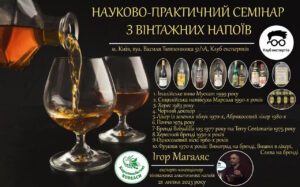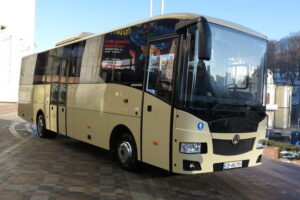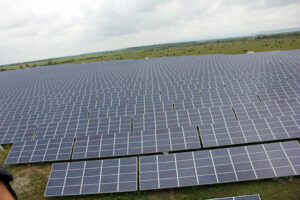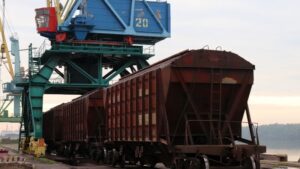
On Friday, July 31, the conference hall of the Kyiv-based think tank Experts Club hosted the fourth scientific and practical seminar-tasting of vintage drinks for people aged 20 to 80. The event was attended by Ukrainian and international wine experts, retailers and media representatives. Ricardo Nuñez, one of the world’s leading winemakers and an investor in the Ukrainian wine industry, was the guest of honor.

Igor Magalyas, a leading expert collector of vintage alcoholic beverages, introduced the participants to his collection, which includes the most popular Ukrainian and European brands of wines and brandies, including:
1. Italian wine Muscat, produced in 1999, which has a unique bouquet, characterized by luxury and depth.
2. Black Doctor 2005 – a wine with a wonderful multi-component aroma, which harmoniously combines the tones of dark grapes.
3. Massandra sherry made in 1983 is a unique wine from the Crimea, famous for its palette of aromas and flavors.
4. Sicilian semi-dry Marsala of the 1990s – this drink gives off a feeling of rich flavor, complemented by notes of cherry, fruit and vanilla. Marsala is considered one of the most famous Italian wines and is a symbol of Sicilian winemaking.
5. Green apple liqueur from the 1970s – this drink is attractive for its fresh and fruity aroma, with a balance of acid and sweetness. Its unique flavor evokes memories of summer, green apples and outdoor picnics.
6. Apricot liqueur of the 1980s is a sweet, but not over-colored drink that explodes with natural apricot flavors.
7. Poncho 1974 is a citrus alcoholic beverage with a unique flavor bouquet that combines the acidity of lemon, orange and grapefruit with light notes of spices. Made according to a traditional recipe, Poncho is a classic of cocktail culture.
8. Bobadilla 103 Sherry Brandy 1977 – with an unsurpassed bouquet of vanilla, caramel and nuts, this brandy is a model of sherry style. It has a balance between sweet and dry, with a rich and intense flavor.
9. Terry Centenario Sherry Brandy 1975 is a perfect representative of Spanish sherry, known for its deep aroma, with notes of nuts, fruits and spices. Its rich, delicious flavor and long aftertaste are the unique features of this exceptional drink.

10. Sherry brandy from the 1950s is a true relic of the past, with a rich and intense flavor that includes notes of caramel, nuts and dried fruit. This old sherry brandy is a reminder of the long and glorious history of winemaking in Spain.
The most intriguing part of the tasting was the rare dessert drinks, which are a real “living museum” of the alcohol industry of the 1970s. These are four special drinks: grapes, cherries, plums and raisins infused in different types of brandy and liqueurs. Among them, the Muscat raisin grappa was especially appreciated by experts, as it is distinguished by its unique bouquet.
High-quality gastronomic pairings for the drinks presented during the tasting program were provided by one of the best Ukrainian meat producers, Karapyshivski Kovbasy, a trademark of the company.
Igor Magalyas noted that all the presented drinks are in an affordable price segment, and their cost does not exceed the cost of modern vintage alcohol in Ukrainian supermarkets.
“These drinks were purchased by collectors in Europe at auctions or sales of private collections. They have a number of flavor and quality advantages over modern drinks,” he said.
Maxim Urakin, the event’s organizer, emphasized the importance of systemic support for Ukrainian winemaking.
“Long-standing Ukrainian-made beverages have traditionally been at the top of our experts’ preferences. However, without new systemic efforts by the government to support the industry, the situation will deteriorate. That’s why the Club of Experts analyzes the situation and provides its proposals in this regard,” emphasized Maxim Urakin.
ALCOHOL, CLUB_OF_EXPERTS, EUROPEAN_WINE, KOROPYSHIVSKI_SAUSAGES, MAGALIES, RICARDO_NUNEZ, SEMINAR, TASTING, UKRAINIAN_WINE, URAKIN, WINE, WINE_INDUSTRY, WINEMAKING

The State Service of Ukraine for Transport Safety (“Ukrtransbezopasnost”) has extended for a month – until August 31 the deadline for making changes in the environmental class of passenger buses, in the information of which is not specified class of environmental friendliness or specified environmental class “EURO-1”, the press service of the agency said on Monday.
“From September 1, if the passenger bus does not specify the class of environmental friendliness or specified environmental class “EURO-1”, to apply for crossing the border “18-60″ will become impossible”, – stressed in “Ukrtransbezopasnost”.
Environmental standard (or class) is the only established for all cars the norm of substances dangerous to the environment contained in the exhaust gases of vehicles.
To date, the newest class is “EURO-6”.

Deputy Energy Minister of Ukraine Yaroslav Demchenkov and State Secretary of the Ministry of Economy of Slovakia Peter Shvets discussed the possibilities of expanding the activity of Slovak business in the Transcarpathian region, in particular, in the area of expanding the potential of wind generation.
“There is a strong export-import potential between our countries, we are working on expanding energy corridors and creating infrastructure projects of common interest, both in the electricity and gas sectors, including renewable gases,” Demchenkov said during the meeting, as quoted by the Energy Ministry on Monday.
According to the ministry, more than 200 companies from other regions of the country have relocated to Transcarpathia since the start of the Russian occupiers’ full-scale invasion of Ukraine, causing the region’s electricity consumption to rise.
“So, it is necessary to focus on additional capacity, creation of balancing systems, strengthening of grids, implementation of new infrastructure projects, as well as development of production of equipment necessary to accelerate the green transition,” the ministry emphasized.
As noted in the Ministry of Energy, recently in one of the communities of Zakarpattia region held public hearings, where the idea of creating a wind park to cover its own demand and export electricity was positively received.
“The potential of bioenergy is also being studied,” the ministry added.

The unloading of railcars with grain in the ports of Greater Odessa has stopped due to the stoppage of the “grain corridor”: only 10 railcars were unloaded over the past 24 hours, Ukrzaliznytsia (UZ) reported in its weekly report on Monday.
The average daily indicator of carload shipment in the ports of Greater Odessa due to the blocking of the “grain corridor” in July amounted to 80 cars/day, having deteriorated over the last week by 30 w/c.
At the same time, a slight increase in the number of railcars with grain, which move in the direction of the ports of Greater Odessa – up to 168 cars from 109 cars, the report said.
The load on the port of “Izmail”, which is an alternative for the export of grain cargoes continues to increase. Over the past week (from July 24 to July 31), the total queue of cars that move in the direction of the port amounted to 7.8 thousand cars, of this number – 3.034 thousand cars with grain. This is by 500 cars, or 19.7%, more than last week, when there were 2,534 cars in the queue.
The average daily unloading rate of grain cars at the port “Izmail” is 88 cars per day, which is 15 cars per day or 14.5% less than in the previous week.
“Due to weather conditions (wind, precipitation) and restrictions on the passage of trains, the daily unloading of grain cargo in the port “Izmail” decreased. The situation with unloading is gradually normalizing”, – it was reported.
In addition, in the direction of the transition Serpneve-1-Basarabeasca (Moldova) is fixed accumulation of about 1.3 thousand cars, including grain – 319 cars, with oil – 153 cars.
Earlier it was reported that the number of ships in the port of Izmail, according to the data of Marine Traffic monitoring application, increased to 120 on Monday against 109 last week, 32 more ships are expected to arrive. During the week, the number of ships at the port ranged from 111-113. The number of vessels at the Port of Reni decreased to 58 vessels on Monday compared to 64 last week. Another 16 vessels are expected to arrive. On Saturday there were 54 ships in the port, during the week – 58-61. Traffic has not resumed in the largest Black Sea ports.

In the first half of 2023 concluded lease deals for 69 thousand square meters of offices in Kiev, which is 51% more than the same period of 2022, follows from the research of CBRE.
“These are not the volumes we saw before the war. But tenants have increased their activity in the market on the background of attractive discounts and the opportunity to improve the quality of their offices,” said Anastasia Kachan, Senior Office Real Estate Consultant at CBRE, at the conference “Ukrainian Real Estate Market Analytics: first half of 2023”.
According to her, most of the tenant categories have reduced activity in 2022-2023. – FMCG, business services, wholesale, medicine. At the same time, there is an increase in inquiries from public sector companies and non-government public organizations. Before the war, these tenants gave up to 5% of lease transactions, now they have almost 30%. As for the IT sector, it managed to keep its leading positions, last year its share decreased from 45% to 32%, now it is about 47%.
New supply is insignificant: in the first half of the year the office real estate market was replenished with only 13 thousand square meters, which is 86% less than the volume of new supply in the first half of 2022.
“Now only the objects started before the war are being completed, and this situation is likely to last for quite a long time, given the vacancy rate,” Kachan said.
As of the end of Q1 2023, 26.4% (+0.4% vs. the beginning of 2023) are vacant. At the same time vacancy in Class B office centers decreased from 29.2% to 28%, in Class A increased from 22.3% to 24%.
The expert explained the growth of vacancy in class A primarily by a significant amount of new supply of class A at the end of last year.
The effective prime rate has stabilized at $21/sq. m/month.
As for the timing of contracts, Kachan noted the willingness of businesses to plan for the medium term in a war-torn environment.
“Last year, contracts were more often renegotiated for three to six months with the expectation that the war would end soon. In 2023, the terms are fixed “until the end of wartime,” where the “war rate” is prescribed and there is an agreement that after the war it will be revised to reflect market conditions,” Kachan said.
In the spring, CBRE conducted a survey of companies’ plans for their offices. Most of them, 56%, intend to keep the volumes, some are negotiating more favorable lease terms, some are doing nothing. 13% reported that they will partially reduce the office, 12% are considering moving to a co-working space, 12% are closing/canceling the office, 4% are thinking about sub-tenants, 3% want to move to a cheaper office.
At the same time, actual office attendance ranges from 15-20% to 50+%, depending on the business model.
Factors in choosing a new office remain unchanged. Top requirements: equipped bomb shelter, distance from critical infrastructure, energy autonomy.
“Given the uncertainty of energy supply during the 2023 heating season, we anticipate an increase in fall/winter attendance,” Kachan reported.
Headquartered in Los Angeles, CA, CBRE is the world’s largest commercial real estate advisory and investment company, with revenues of $30.8 billion in 2022, according to Fortune, a Fortune 500 list of the world’s largest companies.
Shares of CBRE Group Inc. are traded on the New York Stock Exchange.
CBRE’s Ukrainian office was opened in January 2008 and is part of the company’s affiliated network.

Ukraine is the most mined country in the world, it may take 757 years to completely demine its territories if it is handled by 500 teams of specialists who are working in the country now, The Washington Post writes.
“According to a recent report by Slovakian think tank GLOBSEC, about 30% of Ukraine’s territory (more than 67,000 square kilometers) has been severely affected by munitions and will require time-consuming, expensive and dangerous demining operations,” the article says.
Referring to the GLOBSEC data, the publication notes that “Ukraine has become the largest mined territory in the world, surpassing Afghanistan and Syria”.
The Washington Post also writes that the international non-profit organization HALO Trust, which deals with mine clearance, based on information from open sources has tracked more than 2,300 incidents on the territory of Ukraine, during which munitions requiring clearance were found.
In addition, from the start of Russia’s full-scale invasion in February 2022 through July 2023, the United Nations has documented 298 civilian deaths from explosive remnants of war, including 22 children, and 632 civilian injuries.
“Ukraine’s contaminated territory is so large that some experts estimate that humanitarian cleanup will take the roughly 500 demining teams currently working 757 years,” The Washington Post summarized.
Source: https://www.washingtonpost.com/